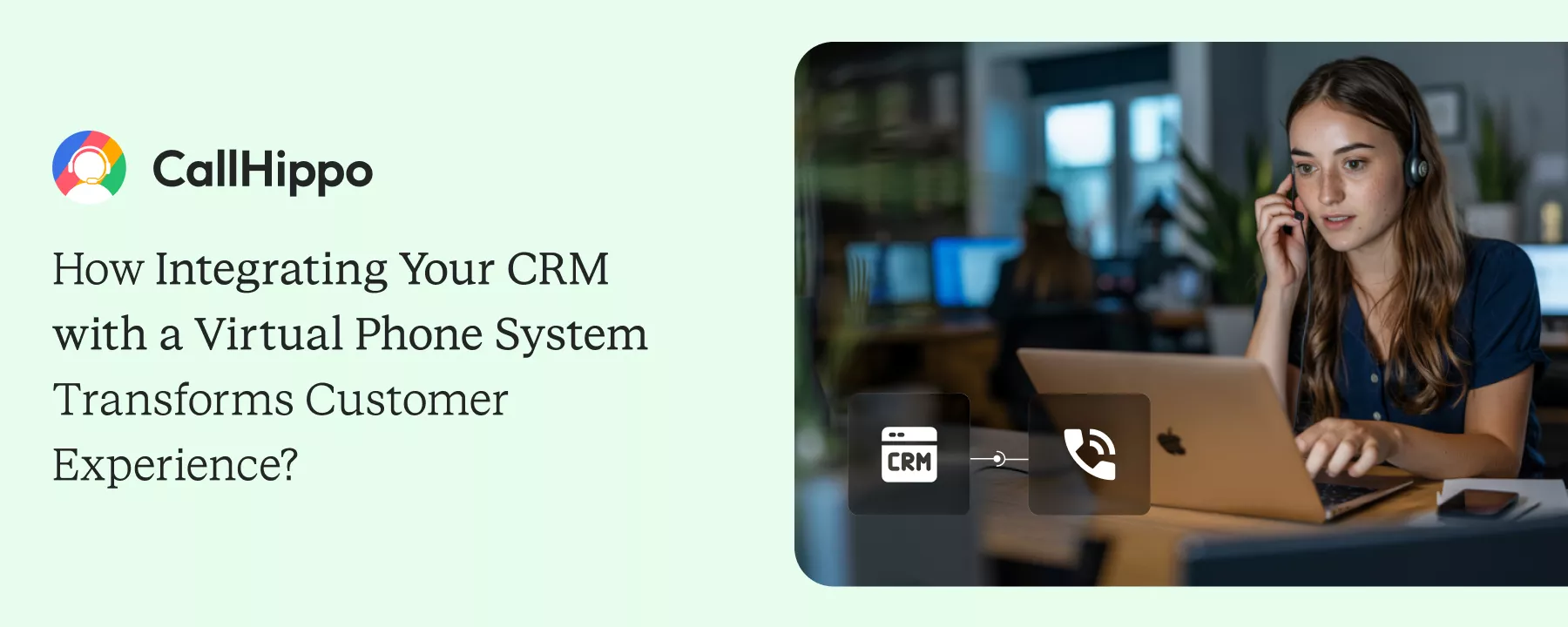89% of the businesses are soon expected to compete with each other based on only one parameter- CUSTOMER EXPERIENCE. In today’s over informative environment not having detailed information about your customers can put you away behind your competitors. In fact, you will lose a competitive advantage of not having insightful data that your rivals are probably flourished with.
In order to address this issue a lot of organizations today have adopted CRM platforms to capture customer data to drive the sales and marketing processes. If you know the trick to use CRM smartly you can create a 360-degree view of the customer and provide them with the information needed. Different businesses use different types of CRM such as operational, analytical, or collaborative systems and choosing the right one helps in capturing customer data more effectively.
Implementing a CRM is one thing and using it to integrate processes and workflows to make it a powerful business component is another thing. This is where linking the virtual phone system to the CRM software can change the game of your business. It will increase the call volume, provide better visibility into the call activities and will improve training processes. Save all your customer interaction by integrating telephony into the CRM software.
Some of the outstanding features of these power couple are:
- Type the number you want or copy it from your contact list, or make a call directly from the CRM using the click to call functionality
- Using a VOIP based CRM note down the important points while communicating with your prospects and save them so that they get reflected in your timeline.
- All the calls made and received will be recorded. You can use these calls for feedback or for training purpose.
- Automatic Call Distribution: Depending on the availability of the employees you can decide between a sequential and a simultaneous Ringing.
- Greetings: The caller will be welcomed with an actual human greeting. You can even customize the greeting for a promotional offer a discount or something similar.
How Cloud Phone System And CRM Integration Will Improve Your Business Communication?
Cloud-based business communications solutions have come a long way. From being considered as a cheap alternative to on-premise phone systems, it is now considered as the primary choice for business communications for companies of all sizes. And like all great products and services, it continues to evolve and add different functionalities to better meet the needs of its customers.
One of those innovations is its ability to play nice with other business productivity apps, specifically customer relationship management systems or CRM.
In fact, here are some ways how integrating your phone into your CRM can help your business be more successful:
1. Improves efficiency
The main purpose of integrating your phone solution into your CRM is to improve efficiency. By adding your communications component into your CRM, employees would no longer have to shift from the CRM app to the phone app to make or receive calls. In addition, you can also set it up where customer information automatically pops up whenever they call. This saves the employee the time and effort to look for the customer’s profile and pull it from the system.
And let us not forget outgoing calls. Instead of having employees dial the numbers into your phone app, you can also set it up where phone numbers within the CRM are clickable via the click-to-call feature. Not only does it make dialing faster, but it also significantly reduces misdial instances because it removes the human element in the process.
2. Easier tracking
Sometimes, the most important pieces of information are the ones that are not being tracked. That includes information on who talked to whom in a business setting. That is even more problematic when an incident arises from one of the many customer phone interactions within the company wherein one cannot pinpoint who handled a particular call.
But when you integrate your phone system into your CRM, you also get to merge call logs and call history with customer profiles from your CRM. From there, you will be able to track who talked to which customer, the time of the call, duration of the call, and other similar information. If you have call recording functions, it will even be easier to pinpoint which call recording you need to listen to when investigating incidents.
3. Personalizes Customer Service
As mentioned, you can set up your system so that when a customer calls, his or her customer profile will pop up and be accessed by the employee assigned. This saves the employee the time and effort to search and open the customer’s profile, which also translates to more time to provide good customer service.
To take it even further, having your phone solution integrated into your CRM is also a step towards an omnichannel setup. By having all your communication channels, including social media, email, chat, and issue ticketing systems linked to the CRM, you can achieve the seamless flow of information where all communications from the customer can be accessed through one account. With all this information, employees not only get to access basic information but all communications history from different channels. With the information at hand in an instant, the employee will have an easier time providing a more personalized experience.
4. Gives you more data
Aside from being able to track calls more easily, integrating your phone solution into your CRM also means access to more data. Data is invaluable. When used properly, it gives insight into different things about your company. Separately, both your phone solution and your CRM are already providing you with useful information.
From your phone system, you can investigate your call log history, your virtual phone number data including which one is getting the most calls, and who is the person assigned for each phone number or extension. Your CRM, on the other hand, gives you information on your customers. You get access to customer basic information, existing accounts, customer leads, and sales opportunities.
Combine those, and you get more quantifiable data that you can use to improve customer experience. This includes talent and skill evaluation data like average sales call duration, upselling activities, and overall conversion rates.
5. Improves employees’ performance
Speaking of talent/skill evaluation data, by having quantifiable data to properly evaluate your workforce as objectively as possible, you also get more opportunities to improve and refine their skillsets to better serve your customers.
The right data combined with the constructive feedback from your managers and supervisors will help you help your employees see their areas of improvement and their overall strengths. And they will know that what you tell them is the truth because it is backed by data.
But data aside, by virtue, that integrating your phone solution into your CRM makes their jobs easier, it should automatically make them better employees as well. By no longer encountering trivial roadblocks like failing to find customer profiles or misdialing phone numbers, your employees can now focus on being the best employee they can be for your customers.
What Are the Benefits of Virtual Telephony to your CRM system?
1) Track the customers Calls efficiently
Maintaining a good relationship with your customer is important for every business. But it becomes a problem when you are unable to identify which employee of your company had a particular conversation with the customer. In short, it becomes difficult to identify precisely who answered which call. This is where tracking customers calls can be helpful. With virtual phone system CRM Integrations, data of all the calls is saved and it can be easily tracked and managed. This way you can easily pinpoint the callers and customers involved during a particular call if something went wrong.
2) A personalized Feel to the customers
89% of the customers get frustrated because they have to repeat their issues and queries to multiple representatives. But with a CRM integrated into the Virtual Phone System, you can save complete information of your clients and customers along with their profiles. This can help you build a better relationship with your customers as you have information about their name, profession, etc well in advance. In addition to this, all the interaction that you had with the customers get saved automatically. So the next time when you call them you have a detailed history of the previous conversation to handle the situation in the best possible way.
3) Improved performance and better evaluation of employee
Evaluation is an important entity as it helps you know the ability of your employee. The manager can evaluate the employee’s efficiency based on various parameters such as deals closed, customer queries resolved, calls answered, customer feedback etc. Based on the employee’s efficiency he can guide them to do better with their upcoming calls. Also, the CRM integration gets your employees a full-fledged employee database that will make sure that they do not feel any initial setbacks such as the inability to answer the question, not able to find a customer profile and dialing to a wrong person.
4) All at one place
The best and the most important advantage of a CRM integration with virtual phone number is that you will have all the necessary information aggregated at one place. You don’t have to go through multiple files or pages to find the details about an employee. In fact, the CRM Integration will create a database of all the numbers you have called so far. This way you don’t miss out an important customer or dial to a wrong person. In addition to this, the CRM app clicks to call function enables your employee to call you directly from the app itself by simply clicking on the number. This saves all the hassles of going to and fro between two apps for a simple job.
5) An easy set up of a Virtual Global Office.
Using a virtual Phone System integrated with CRM you can seamlessly work with your remote employees. If any of your designated employees are not available due to some reasons, you can assign it to other sales members as the CRM will have the customer information backed up. You can also make sure that your lead or customer is backed up with easy reminders.
With the call forwarding feature of the Virtual Phone system, you can route the calls to the employee’s smartphone as well. This way there is a decrease in the chances of any missed sales opportunity.
Conclusion
Having a Sales CRM empowered with a virtual Phone system is the perfect weapon you need to win new leads and close more deals. You have a centralized repository accessible from anyplace anytime, a team spread worldwide but still on the same page, a system that allows you to make international calls at an affordable price. What else does a business need to taste the aroma of success? So wait no more and Integrate your CRM with CallHippo today. We have recently integrated “ Zapier” which means it doesn’t matter which CRM you are using you can always use CallHippo services seamlessly. Happy Calling..!!

Subscribe to our newsletter & never miss our latest news and promotions.









